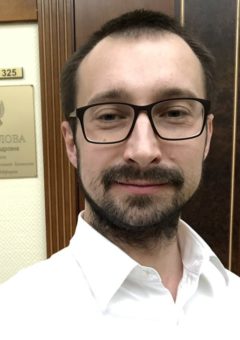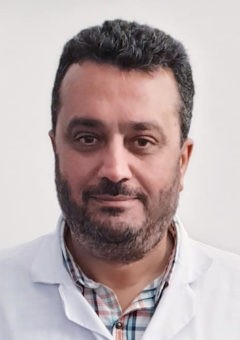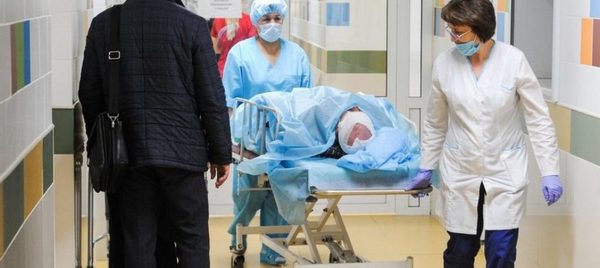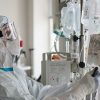 The number of people with coronavirus infection in the world has exceeded the 31 million mark, almost a million people have died. In March and April, hospitals in Russia and other countries were overcrowded, and doctors were forced to work around the clock. In the summer, the situation began to stabilize, but many feared that in the autumn incidence rate would resume.
The number of people with coronavirus infection in the world has exceeded the 31 million mark, almost a million people have died. In March and April, hospitals in Russia and other countries were overcrowded, and doctors were forced to work around the clock. In the summer, the situation began to stabilize, but many feared that in the autumn incidence rate would resume.
Doctors told Pravmir about the changes that have occurred in the six months since the beginning of the pandemic, what is happening in hospitals now and whether we should expect the second wave of COVID-19.
Treatment has become more effective

Andrey Olshevsky
Andrey Olshevsky, a senior doctor at the first-aid station named after Puchkov in Moscow, says that doctors have learned to deal with COVID-19 more successfully, and there are fewer complications in patients.
— There are much fewer coronavirus cases now compared with spring. And we are coping with the situation. All mechanisms and processes have been set up: patient sorting and their further treatment. A whole system has been launched and it is constantly changing and adjusting to the situation we are seeing. That is, everything is much easier now than it was in spring, when strategies changed almost every day, there were a lot of patients, including among doctors.
Measures aimed at containing the virus and limiting its spread, including lockdown measures, have borne fruit, stopped the flow, and now we are working at an average pace.
A small increase in the incidence that we are seeing now is due to the fact that people came back from vacation, returned to work, a new school year started for schoolchildren and students. Public areas have become more crowded. Therefore, the number of new coronavirus cases may increase. Yet, at the same time, many hospitals have switched to normal operation.
We have learned to fight coronavirus better: to treat it, to deal with the symptoms it causes. As there are fewer cases, the number of people in intensive care and those connected to a ventilator has decreased.
Due to the new treatment strategy, there are no such complications that were present at the beginning of the fight against the infection: in particular, there are less cases with lung fibrosis. The treatment has become more effective. Doctors have learned to deal with complications much more effectively than at the early stage of the pandemic.
I cannot say that the disease progression has become milder. Someone resists the disease easily, others get seriously ill. This depends on the reactivity of the body itself. Many people have previously had a mild form of coronavirus, they simply did not go to a hospital, and then they have tested positive for COVID-19 antibodies. However, we cannot say that there is wave of mild infection now.
The virus itself is not fully studied, and we cannot say yet that it has weakened. There is no such option that the disease progresses lightly now, that it has become less common. No. It is still the same virus. We cannot say otherwise yet.
We have ten times less serious patients now

Ayk Vardanyan, Photo: Instagram / doc.03
Ayk Vardanyan, the head of the anesthesiology and emergency department at the Simone Veil hospital in France and the author of the “News from the COVID-19 front” blog, says that despite the fact that more people infected with coronavirus have been identified, there are ten times less patients in serious condition.
— In France, there were two large focal areas of coronavirus infection in spring: in the Strasbourg area, in Paris and its suburbs. Then, the concentration of infected was high, the situation developed very quickly and escalated. At some point, the number of patients in intensive care increased four times in one week. It was a frightening situation.
And then the quarantine took effect, the incidence began to fall, and in the end of May the situation almost completely stabilized: the incidence rate became low, coronavirus became the same disease as others. We had already learned a different approach to treatment.
To date, the number of severe coronavirus patients in French hospitals is ten times less than it was in March.
The thing is that the number of infected people is the data required to track the epidemiological situation. From a medical point of view, the number of hospitalized patients, the number of intensive care patients and the mortality rate are important. These are the numbers that can be used to discuss the probability of the second wave.
In spring, it was simply impossible to do enough tests. Now, 13 thousand infected people are detected per day. If the same number of tests were performed in March and April as now, it is possible that more cases would have been identified.
That is, the data on the detected number of infected people does not say anything about it. To understand the danger of today’s situation, it is important to know how many people are hospitalized, how many are in intensive care, and how many die every day.
In spring, the infected people were concentrated mainly in two French regions, but now the infection cases are detected throughout the whole country. Yet, in spring, hospitals had to close all operating rooms and double or triple the amount of beds in intensive care for patients with coronavirus. Now the hospitals have returned to their core work, and about a third of bedspace in intensive care is allocated for COVID-19 patients.
The situation now is completely different compared to the situation in spring. In my opinion, it is less dangerous. The figures for infected that are published now are the number of positive cases. Yet, regarding the number of intensive care patients, everything has been almost stable over the past two months. To date, the number of intensive care patients with coronavirus does not make even a tenth of what it was in March.
We consider three possible reasons for this change in the situation.
First, if someone is diagnosed with coronavirus now, the Ministry of Health conducts an investigation and tracks all contacts. All contacts are tested, which has not been done before. This way, we get high numbers of infected people.
Young people communicate a lot, contact with each other, so the infection of large number of people is possible. At the same time, they have a mild form of the virus or show no symptoms.
The second factor is that the virus may be mutating. For many colleagues note that even in severe patients, the disease does not give the same complications that were at the beginning of the pandemic.
The third reason is that patients with a severe form of disease were immediately intubated and connected to a ventilator. They do not do it right away now but try to wait for some time. Thus, 10-20% of people avoid a long stay in intensive care.
If a patient was admitted to intensive care in spring, they were connected to a ventilator for at least three weeks. Now some patients manage to avoid this, so they move faster to the recovery period. Therefore, the concentration of patients in intensive care was high before, but now the situation has changed for the better.
In spring, doctors were more afraid as then we did not know what we were dealing with. Now we consider coronavirus as one of the infectious diseases, because we know how to protect ourselves, what to do to avoid infection, and understand how to treat it.
Translated by Julia Frolova

















